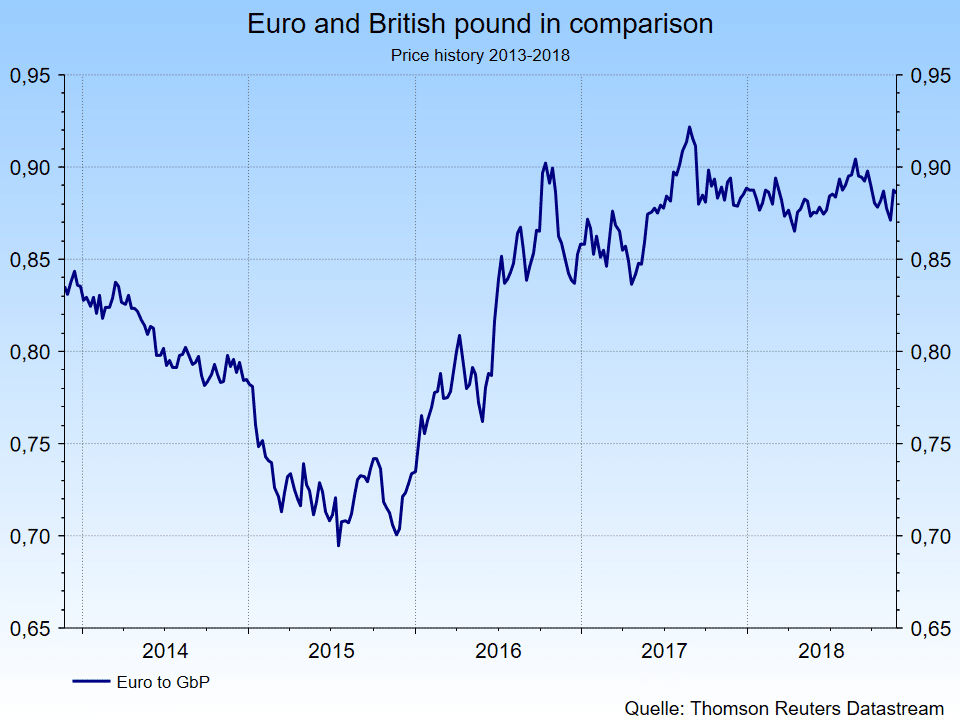
The “divorce agreement” of the British with the EU stands. At the highly anticipated EU Special Summit on Sunday, Britain and the EU agreed on their post-Brexit relations at the end of March 2019. Now only the vote in the British House of Commons is missing. It’s getting tight.
British government negotiators and the EU Commission had previously already agreed on a corresponding political declaration, in which many key points, such as British access to the EU’s internal market, remained undecided until just before the summit.
For British Prime Minister Theresa May, a lot is at stake. After the publication of the draft, she faced massive opposition from her own country: May’s opponents fear that the UK may be forced into a customs union with the EU for an indefinite period even after the Brexit, with Northern Ireland awarded special status. The treaty entails a one-time extension of the transitional phase, initially scheduled to last until the end of 2020. In addition, there will be no hard border with controls between Northern Ireland and Ireland.
Although May’s cabinet approved the draft on 14 November, three ministers, including Brexit Minister Dominic Raab, resigned on the same day. Less support for the draft, however, comes from Parliament, and a majority for the treaty is in doubt – whereas preparations to overthrow May are in full swing. A vote of no confidence is planned, but there are still not enough supporters for such a vote. In addition, calls for a second Brexit referendum are becoming louder. Parliament is to vote on the deal at the beginning of December – after the final treaty is approved at the EU summit.
In order to be able to sell the treaty to Parliament better, May was making an effort in the last few days before the EU special summit to secure extensive support from the other members regarding the future economic partnership. However, the EU is unyielding and unwilling to open a back door to its internal market for the British.
May is backed by businesses and the central bank
However, support for May for the draft comes from the British industry. The head of the Confederation of British Industry (CBI), Carolyn Fairbairn, greenlighted the previously negotiated contract on Monday. “It’s not perfect, it’s a compromise, but it’s hard-won progress,” she said. The deal, and above all its transition period, takes the UK a step away from the “nightmarish abyss of a non-treaty”. The CBI particularly welcomed the transitional period until the end of 2020, during which Britain will remain in the EU internal market and customs union in order to prevent a hard cut for the economy.
Supporting signals are also coming from the Bank of England (BoE). According to central bank chairman Mark Carney, an agreement with an interim solution will help the economy and facilitate EU withdrawal.

Disclaimer: Forecasts are not a reliable indicator for future developments.
The markets are closely following the dispute over the Brexit paper. The British pound lost ground briefly in mid-November after the numerous ministerial resignations, but recovered somewhat shortly afterwards. By contrast, the sentiment on the stock markets has been restrained for some time now, not only due to the Brexit-related trials and tribulations, but also because of the budget dispute between the EU and Italy and disappointing results from US companies, particularly in the technology sector.
Disclaimer:
Forecasts are not a reliable indicator for future developments.
Legal disclaimer
This document is an advertisement. Unless indicated otherwise, source: Erste Asset Management GmbH. The language of communication of the sales offices is German and the languages of communication of the Management Company also include English.
The prospectus for UCITS funds (including any amendments) is prepared and published in accordance with the provisions of the InvFG 2011 as amended. Information for Investors pursuant to § 21 AIFMG is prepared for the alternative investment funds (AIF) administered by Erste Asset Management GmbH pursuant to the provisions of the AIFMG in conjunction with the InvFG 2011.
The currently valid versions of the prospectus, the Information for Investors pursuant to § 21 AIFMG, and the key information document can be found on the website www.erste-am.com under “Mandatory publications” and can be obtained free of charge by interested investors at the offices of the Management Company and at the offices of the depositary bank. The exact date of the most recent publication of the prospectus, the languages in which the fund prospectus or the Information for Investors pursuant to Art 21 AIFMG and the key information document are available, and any other locations where the documents can be obtained are indicated on the website www.erste-am.com. A summary of the investor rights is available in German and English on the website www.erste-am.com/investor-rights and can also be obtained from the Management Company.
The Management Company can decide to suspend the provisions it has taken for the sale of unit certificates in other countries in accordance with the regulatory requirements.
Note: You are about to purchase a product that may be difficult to understand. We recommend that you read the indicated fund documents before making an investment decision. In addition to the locations listed above, you can obtain these documents free of charge at the offices of the referring Sparkassen bank and the offices of Erste Bank der oesterreichischen Sparkassen AG. You can also access these documents electronically at www.erste-am.com.
Our analyses and conclusions are general in nature and do not take into account the individual characteristics of our investors in terms of earnings, taxation, experience and knowledge, investment objective, financial position, capacity for loss, and risk tolerance. Past performance is not a reliable indicator of the future performance of a fund.
Please note: Investments in securities entail risks in addition to the opportunities presented here. The value of units and their earnings can rise and fall. Changes in exchange rates can also have a positive or negative effect on the value of an investment. For this reason, you may receive less than your originally invested amount when you redeem your units. Persons who are interested in purchasing units in investment funds are advised to read the current fund prospectus(es) and the Information for Investors pursuant to § 21 AIFMG, especially the risk notices they contain, before making an investment decision. If the fund currency is different than the investor’s home currency, changes in the relevant exchange rate can positively or negatively influence the value of the investment and the amount of the costs associated with the fund in the home currency.
We are not permitted to directly or indirectly offer, sell, transfer, or deliver this financial product to natural or legal persons whose place of residence or domicile is located in a country where this is legally prohibited. In this case, we may not provide any product information, either.
Please consult the corresponding information in the fund prospectus and the Information for Investors pursuant to § 21 AIFMG for restrictions on the sale of the fund to American or Russian citizens.
It is expressly noted that this communication does not provide any investment recommendations, but only expresses our current market assessment. Thus, this communication is not a substitute for investment advice.
This document does not represent a sales activity of the Management Company and therefore may not be construed as an offer for the purchase or sale of financial or investment instruments.
Erste Asset Management GmbH is affiliated with the Erste Bank and austrian Sparkassen banks.
Please also read the “Information about us and our securities services” published by your bank.

